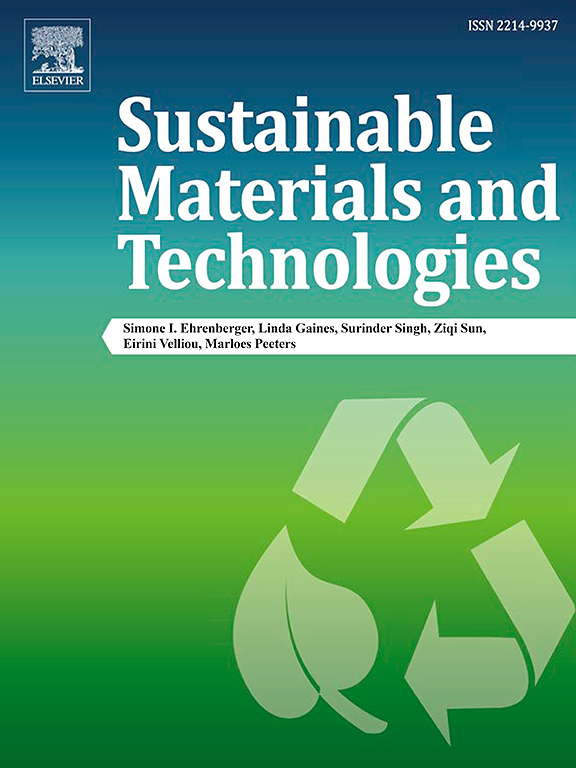Electricity supply resiliency evaluation by a hybrid renewable energy system for a petrochemical plant: Frameworks and quantitative assessment methodologies
IF 8.6
2区 工程技术
Q1 ENERGY & FUELS
引用次数: 0
Abstract
The escalation of harm inflicted upon energy systems, has spurred the investigation of energy system resilience. In this regard, the measurement of resilience capacity can serve as a valuable metric for assessing the energy system's ability to withstand a variety of events that may result in potential adverse outcomes. For renewable energy systems, the measurement of resilience is imperative due to the inherent unpredictability and unreliability in their nature. Often, resilience studies lack the comprehensiveness required to fully comprehend the intricate interdependencies within integrated hybrid renewable energy systems. This research delineates the essential factors required to facilitate a comprehensive understanding and advancement in the quantification of such integrated systems in small-scale. Pardis Petrochemical Company, located in Asalouyeh city, Iran, has been chosen as case study. Four distinct configurations of hybrid renewable energy systems—comprising Photovoltaic panels, Photovoltaic panels + Wind Turbines, Photovoltaic panels + Wave energy converters, and Photovoltaic panels + Wind Turbines + Wave energy converters— connected to grid, have been developed. These configurations are the result of a multi-objective optimization process, considering the following metrics: the cost of electricity (as an economic metric), CO2 emissions (as an environmental metric), loss of power supply probability (as a reliability metric), and exergy efficiency (as a technical metric). Subsequently, a methodological framework for multicriteria decision support is introduced. This framework is constructed based on primary resilience dimensions, namely: “resist,” “restabilize,” “technology,” and “withstand” serve as a tool for measuring the resiliency of the optimized configurations. The findings indicate that the Photovoltaic panels + Wind Turbines + Wave Energy Converters configuration is as the most resilient system among the studied alternatives.
石化厂混合可再生能源系统的电力供应弹性评估:框架和定量评估方法
对能源系统造成的危害不断升级,促使人们对能源系统的恢复能力进行研究。在这方面,对恢复能力的测量可以作为评估能源系统抵御可能导致潜在不利结果的各种事件的能力的重要指标。对于可再生能源系统而言,由于其固有的不可预测性和不稳定性,因此必须对其恢复能力进行测量。通常情况下,复原力研究缺乏全面性,无法充分理解集成混合可再生能源系统中错综复杂的相互依存关系。本研究阐述了促进全面理解和推进小规模量化此类集成系统所需的基本要素。研究选择了位于伊朗 Asalouyeh 市的 Pardis 石化公司作为案例。该公司开发了四种不同配置的混合可再生能源系统,包括光伏电池板、光伏电池板+风力涡轮机、光伏电池板+波浪能转换器以及光伏电池板+风力涡轮机+波浪能转换器--与电网相连。这些配置是多目标优化过程的结果,考虑了以下指标:电力成本(作为经济指标)、二氧化碳排放量(作为环境指标)、供电损失概率(作为可靠性指标)和放能效率(作为技术指标)。随后,介绍了多标准决策支持的方法框架。该框架基于主要的复原力维度构建,即"抵御"、"恢复稳定"、"技术 "和 "承受 "是衡量优化配置复原力的工具。研究结果表明,在所研究的替代方案中,光伏板 + 风力涡轮机 + 波浪能转换器配置是复原力最强的系统。
本文章由计算机程序翻译,如有差异,请以英文原文为准。
求助全文
约1分钟内获得全文
求助全文
来源期刊

Sustainable Materials and Technologies
Energy-Renewable Energy, Sustainability and the Environment
CiteScore
13.40
自引率
4.20%
发文量
158
审稿时长
45 days
期刊介绍:
Sustainable Materials and Technologies (SM&T), an international, cross-disciplinary, fully open access journal published by Elsevier, focuses on original full-length research articles and reviews. It covers applied or fundamental science of nano-, micro-, meso-, and macro-scale aspects of materials and technologies for sustainable development. SM&T gives special attention to contributions that bridge the knowledge gap between materials and system designs.
 求助内容:
求助内容: 应助结果提醒方式:
应助结果提醒方式:


